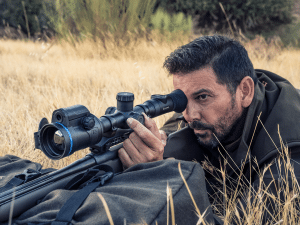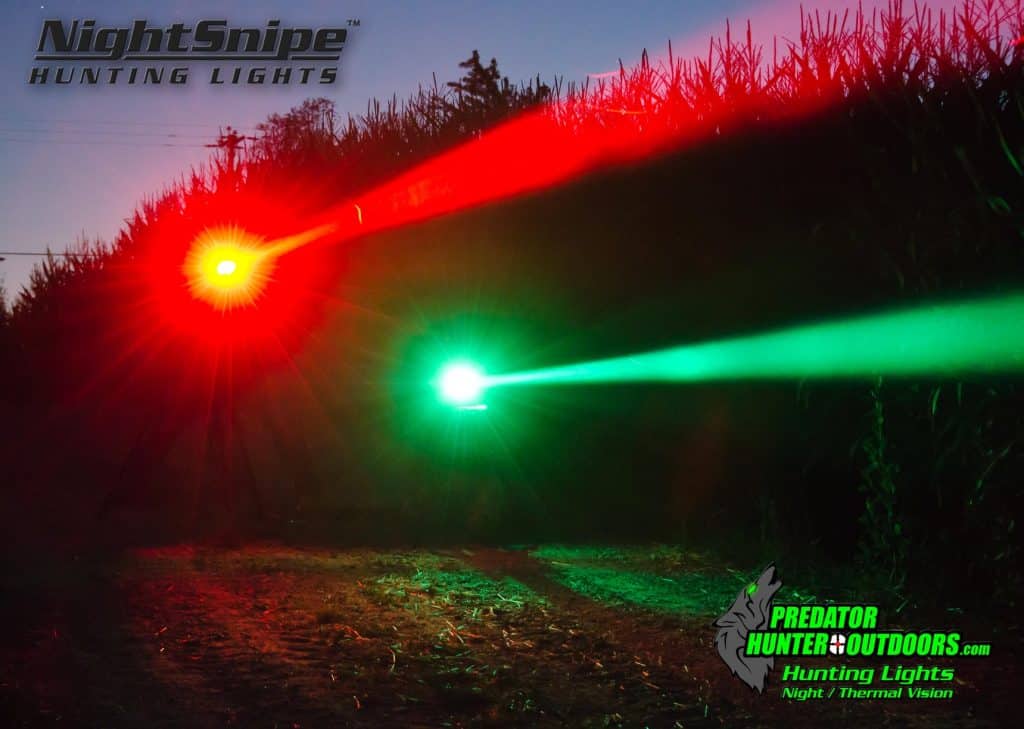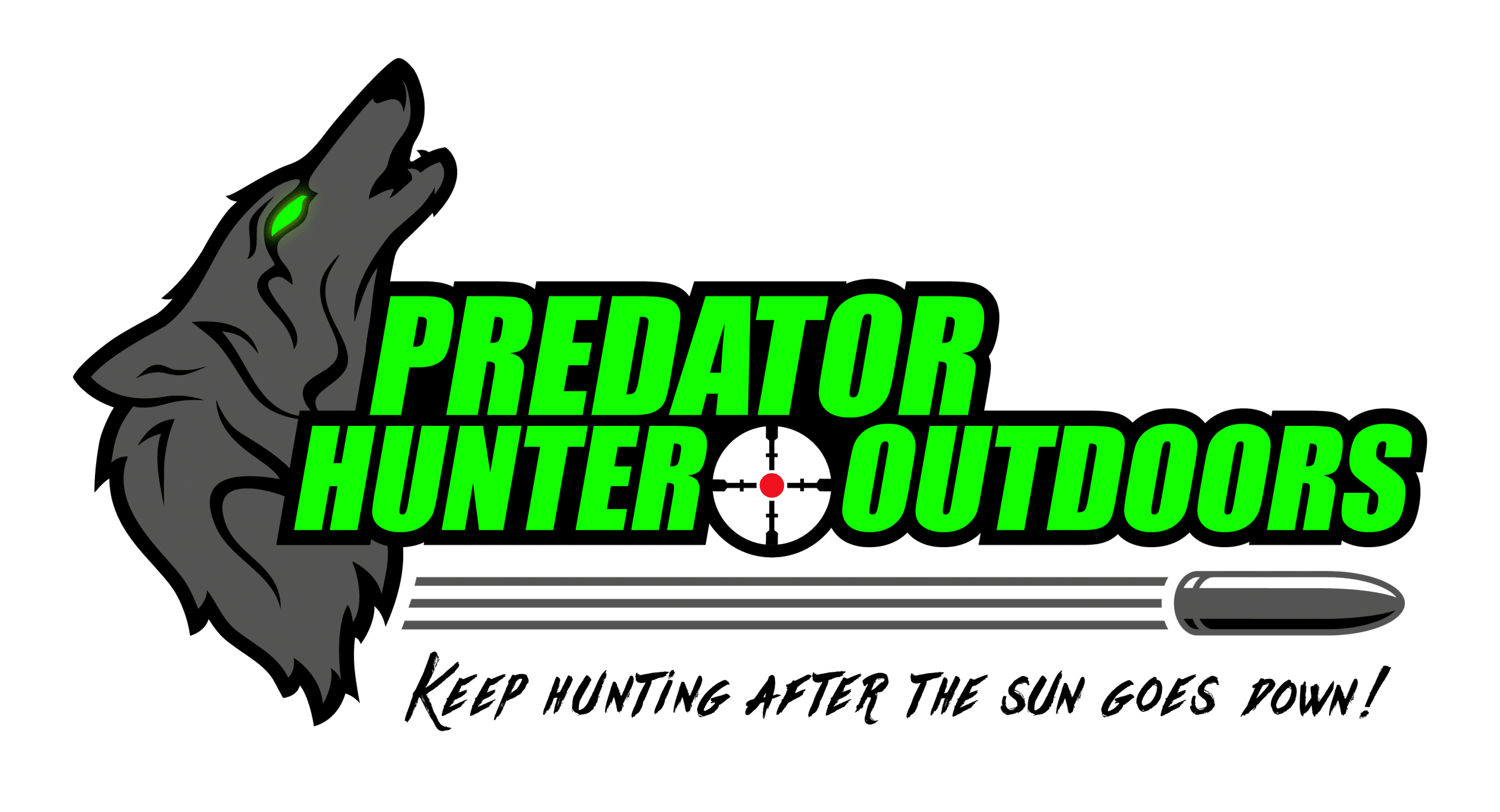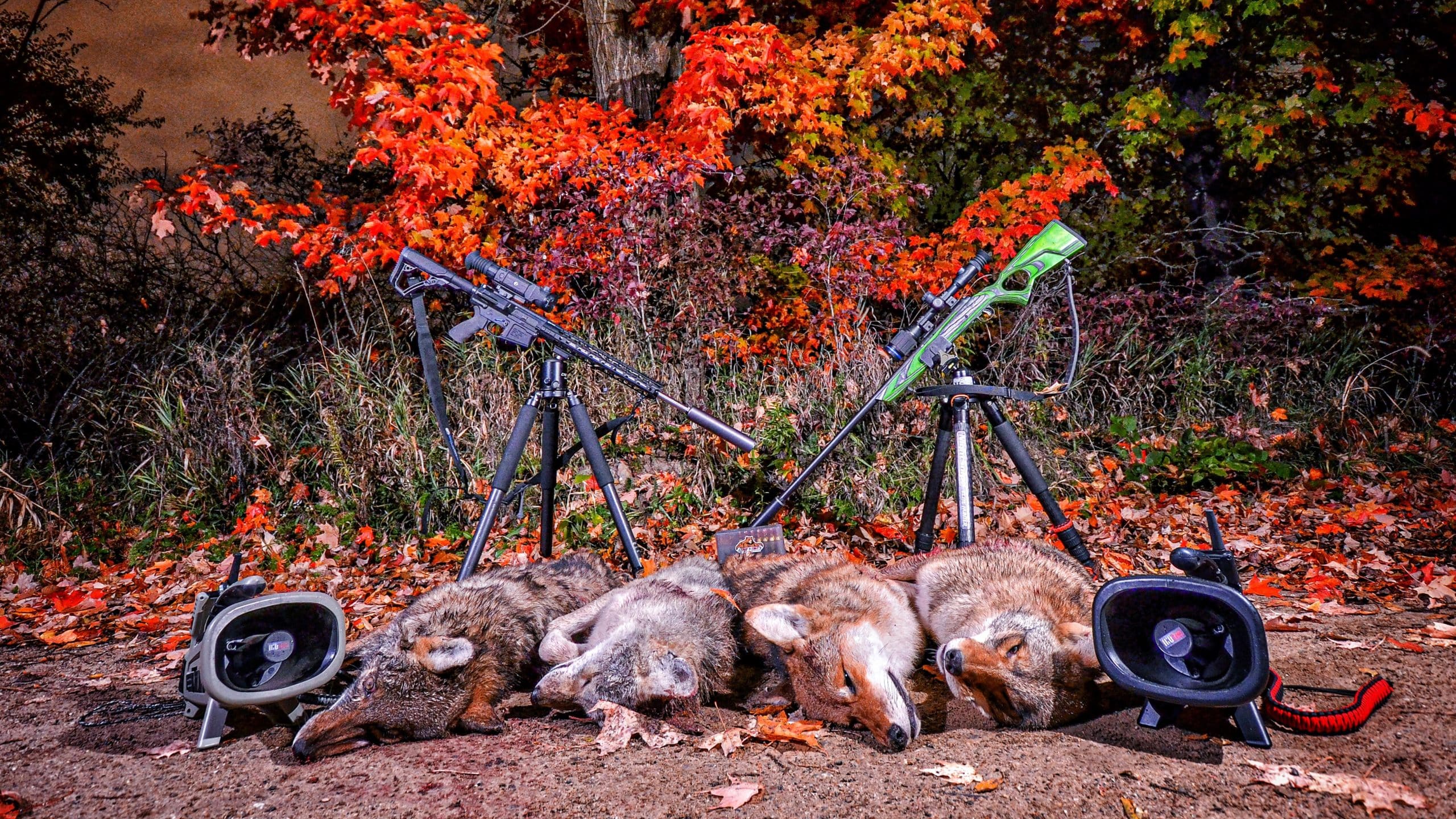Coyote Hunting Tips

Coyote hunting can be a very challenging hobby, with plenty of ups and downs. For years, I would go out and blast a rabbit distress call, thinking it was the “go-to method” of success. Mainly because it worked for me a couple of times, and it seemed to be the call most guys were using, which was the most advertised type of call. Soon after I hit a very boring spree of empty sets, I started getting creative! Listen to any coyote hunting tips that you can from experienced hunters!
A Few Do’s
I soon learned that the flaw in my technique wasn’t the sounds I was using…. It was my approach and setup. You can’t go into a hunt thinking, “This will work every time,” when you’re targeting coyotes. Coyotes are one of the most unpredictable and hardest animals to hunt. They are survivors, and they do just that very well, using their natural instincts to hunt and survive.
So, what did I start doing differently? For night hunting, I started scanning on my way out to my destination. For example, don’t be leery of turning on your thermal/night vision scanner or Hunting Light on the way out to your spot; you’d be surprised at how many times you’ll catch coyotes wandering. Just make sure you are 100% sure you know the identity of your target before you get too excited. Many times, you will catch the eyes of grazing deer, cattle, or something else.
Locating
Locating coyotes is one way of increasing your odds of becoming successful. To hunt coyotes successfully, it’s good to know if they are, in fact, in the area you’re planning to hunt. Go out the night before you’re planning to hunt and let out a couple of lonesome howls, group howls, or other locator calls, and see if you get a response. However, keep in mind that no response doesn’t necessarily mean they aren’t in the area. Many times, they just might not be vocal or there at that given time. Locating gives you an idea of what part of a property you want to focus on and the approach you want to take when setting up.
The Wind
The number one thing to keep in mind is to try and set up on a good crosswind. If you’re using an electronic call, set it up slightly upwind of you in that crosswind. That will help get the coyotes between you and the call if they try to circle. The key is to catch them before they get downwind, which they are very good at!
A Few Don’ts
(Overcalling and overhunting an area). Don’t think that if you call quiet, the coyotes aren’t going to come in. You may be surprised to find out it’s the exact opposite. Most hunters blast their electronic call or mouth call at decibel levels much higher than what is possible from the lungs of the intended prey they are trying to portray. Again, we are in the coyote’s natural environment; they can tell when something is realistic or not.
Rather than starting off with a dying prey sound, start with a howl and wait to see if you get a response. Again, we are looking to locate, and a howl is a great way to see who’s in the neighborhood. Looking and listening are two very important factors. Don’t be afraid to call less and quieter than you might think is necessary. Less is oftentimes more effective. Patience is key!
Overhunting
Overhunting a particular area is also a quick way to educate a coyote, especially when night hunting. I say this especially when night hunting because the cover of darkness is one major advantage that both the coyote and hunter have for one another. Yes, the coyote cannot see us as well, but the same is true for us spotting the coyote. Often we are calling coyotes that slip behind a brush pile or tree line or simply just approach from a direction we had not intended to. We never saw that coyote, but the coyote was indeed there, and now we know that distress sound was definitely not what it was after. With that being said, the coyote now associates that sound and smell with something they know is dangerous, being us humans. That coyote just became educated and will be harder to call in next time. If you continuously do this from the same location or area, you are further educating them and making them that much harder to hunt. If your hunting spots are limited and you don’t want to wait a couple weeks to call that spot, then using different tactics will be key.
Hunting with Lights
When using lights, the red LED is preferred as it is scientifically the least visible to the K-9 / Coyote. A headlamp or handheld scan light is ideal for catching eyeshine reflection before that coyote gets downwind of us and the gig is up. Once you locate the eyeshine reflection, switch over to your gun-mounted light. Keep in mind it is recommended you turn on your gun light before shutting off your headlamp or scan light so it does not shock the coyote. Think of it as with the light staying on the coyote; you are blinding it from seeing your silhouette and the weapon light being turned on.

Hail Mary Shots
Don’t take a pop shot just to see if you can hit your intended target when you aren’t confident. A missed coyote is an educated coyote. Pay attention to their mannerisms when they are out at a distance. You’ll be surprised at how far a curious coyote will travel to investigate that distress sounds, or sound from the other “trespassing” coyote stomping around on their home turf. Be patient but not so patient that you don’t take the shot when you are confident. Coyotes are as unpredictable as they come, if the shot is there and you are confident then do so.
Know The Season
The same sounds might not work all year round. What worked yesterday might not work in a month. The breeding season is a great time to switch up your calling tactics and start focusing on sounds associated with other coyotes rather than sounds of distressed varmints. Tony Tebbe has an excellent sound library of just about every coyote sound a predator hunter could ask for. During the breeding season, focus on coyote whimpers, female coyote howls, breeding coyotes, pup distress, and other sounds associated with the K9. However, these coyote vocals can be used all year and are very effective, not just during the breeding season.
Coyote Hunting Tips Recap
As mentioned before, the coyote also has the cover of darkness to their advantage when night hunting. Just because we are scanning for eyes or a heat signature, it doesn’t always mean we will see them.
Waiting for a wind direction that allows you to set up in a completely different location, opposite from your last location, is a great way to disassociate the last bad experience that coyote had with you.
Use a sound different from the previous sound/sounds you may have used. If that coyote busted you during the last hunt and you were screaming rabbit distress, try using coyote vocals. Pup distress is a great attractant to the K9 breed. Their curiosity and protectiveness will many times draw them into a location they normally would be more hesitant to approach.
These are just a few tips on coyote hunting to get you started as a new coyote hunter. Coyote hunting is a challenging, exciting, and rewarding sport. One thing to remember is do not get discouraged! Every set you do will gain you more experience, confidence, and future success.

